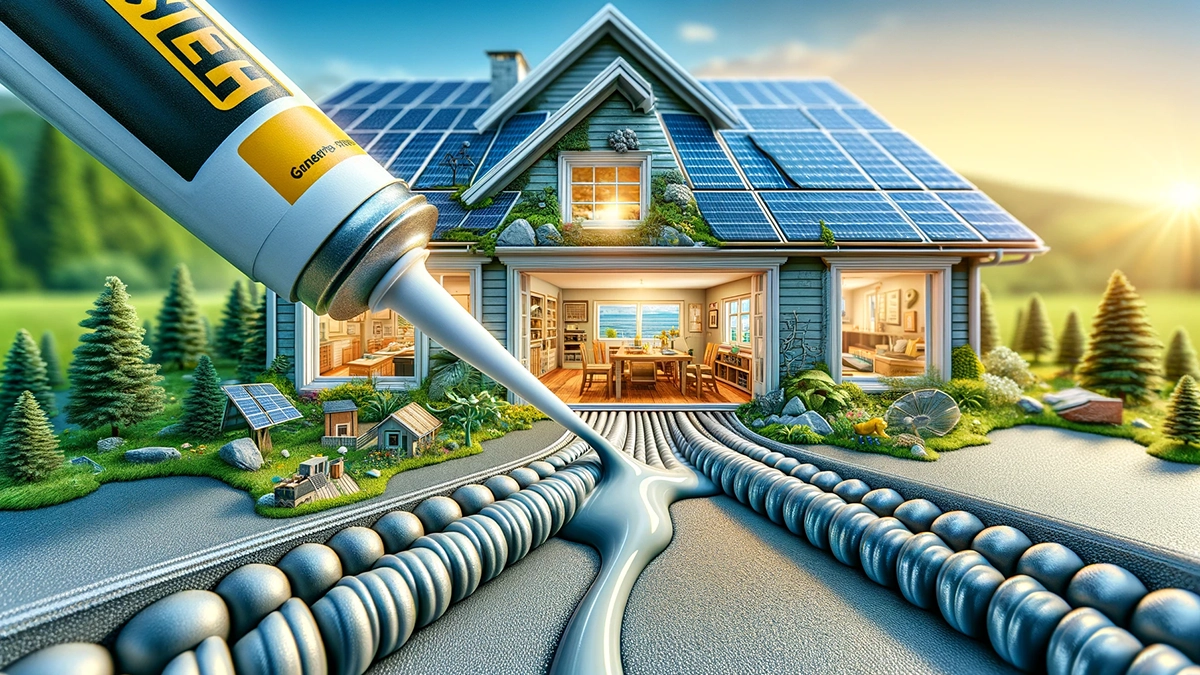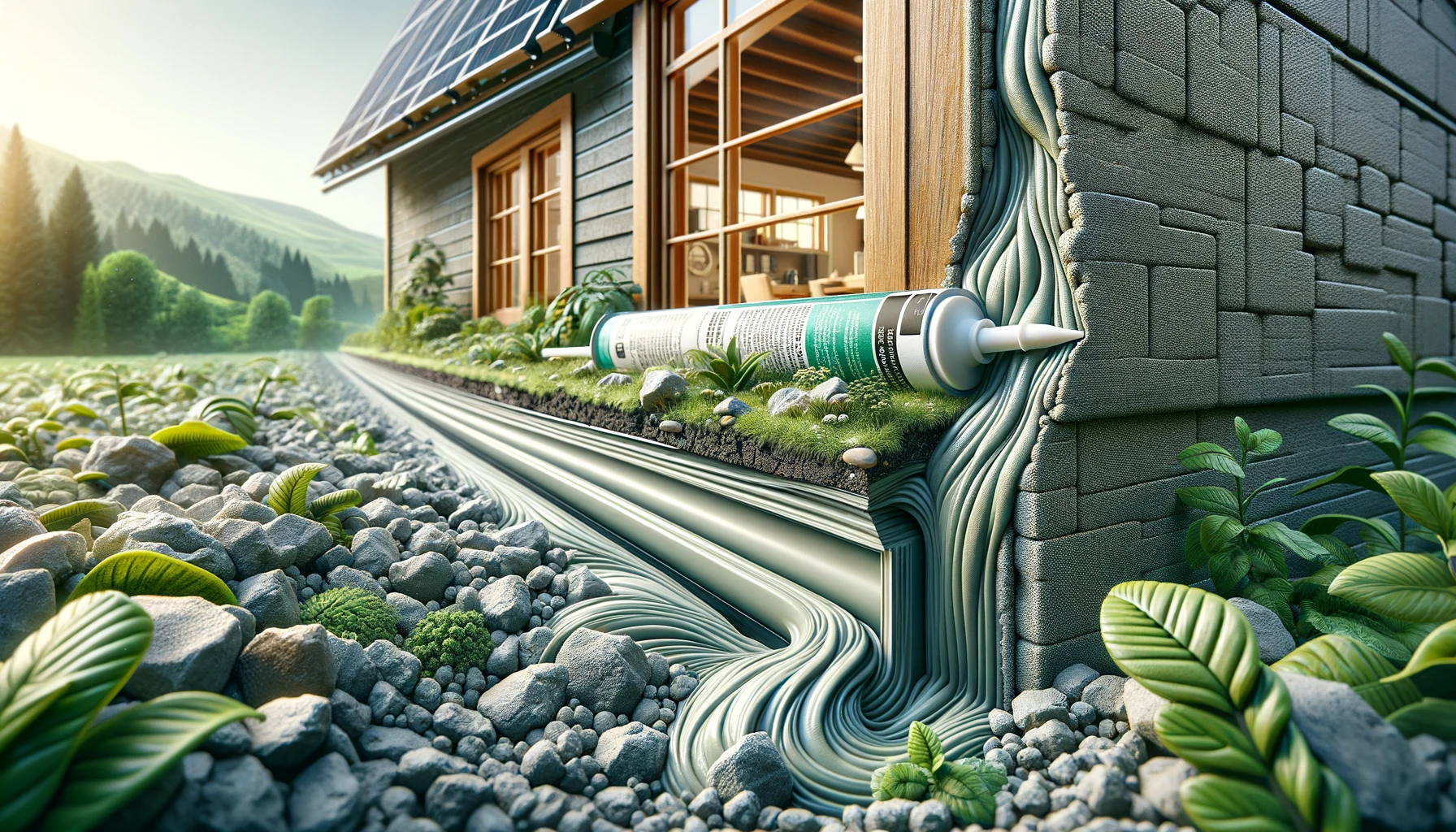The Role of Caulking in Energy Efficiency for a Sustainable Home
Are you looking for ways to make your home more energy-efficient and sustainable? Look no further than caulking! The often-overlooked practice of properly sealing gaps and cracks in your home can have a significant impact on your energy bills and the environment. By creating an airtight seal around doors, windows, and other areas prone to air leakage, caulking prevents conditioned air from escaping and outside air from infiltrating your home. This, in turn, helps your HVAC system operate more efficiently, resulting in lower energy consumption and reduced carbon emissions. In addition to energy savings, caulking can also improve indoor comfort by minimizing drafts and preventing moisture intrusion. Whether you are a sustainability enthusiast or simply looking to lower your utility bills, don’t underestimate the power of caulking. In this article, we will explore the benefits of caulking for energy efficiency and provide tips on how to properly seal your home.
The importance of energy efficiency in homes
Energy efficiency has become a hot topic in recent years, and for good reason. With the increasing cost of energy and growing concerns about climate change, homeowners are actively seeking ways to reduce their energy consumption and environmental impact. Energy-efficient homes not only help save money on utility bills but also contribute to a greener future by reducing greenhouse gas emissions. According to the Department of Energy, residential buildings account for about 20% of the nation’s total energy consumption. By improving energy efficiency in our homes, we can make a significant difference in reducing our carbon footprint. let dive into The Role of Caulking in Energy Efficiency.
Understanding the role of caulking in energy efficiency
Caulking is a simple yet effective technique for sealing gaps and cracks in your home. These gaps and cracks are common in older homes or those with poor construction, and they can lead to significant energy loss. When warm or cool air escapes through these gaps, your HVAC system has to work harder to maintain the desired indoor temperature. This increased workload not only results in higher energy bills but also adds unnecessary strain to your HVAC system, potentially shortening its lifespan. By properly caulking these gaps, you create an airtight seal that prevents air leakage, allowing your HVAC system to operate more efficiently.
Common areas in the home that require caulking
When it comes to caulking your home for energy efficiency, it’s important to know which areas are the most susceptible to air leakage. By identifying and properly sealing these common areas, you can make a significant difference in your home’s energy consumption. Here are some key areas that often require caulking:
1. Windows and Doors
Windows and doors are notorious for air leaks, especially if they are old or poorly installed. Over time, the caulking around these openings can deteriorate, leading to drafts and energy loss. By inspecting and caulking the gaps between the window or door frame and the wall, you can prevent air leakage and improve energy efficiency. Additionally, adding weather-stripping along the edges of doors can provide an extra layer of insulation.
2. Electrical Outlets and Switches
Electrical outlets and switches on exterior walls can be a source of air leakage. These small gaps can add up and contribute to significant energy loss over time. By removing the cover plates and applying caulk around the edges, you can effectively seal these openings and prevent drafts.
3. Plumbing Penetrations
Plumbing penetrations, such as pipes and drains, can create gaps that allow air to escape. Inspecting and caulking around these penetrations can help maintain an airtight barrier and improve energy efficiency. Pay particular attention to areas where plumbing pipes enter or exit the walls or floors.
4. Attic and Basement
The attic and basement are often overlooked when it comes to caulking, but they are prime areas for energy loss. Inspecting and caulking any gaps or cracks in the attic or basement walls can prevent warm or cold air from escaping, depending on the season. This can help reduce the strain on your HVAC system and lower your energy bills.
Choosing the right caulk for your specific needs
Now that you know which areas in your home require caulking, it’s important to choose the right type of caulk for each specific application. Not all caulks are created equal, and using the wrong type can result in ineffective sealing and wasted time and money. Here are some common types of caulk and their recommended uses:
1. Silicone Caulk
Silicone caulk is a popular choice for areas that are exposed to water, such as bathrooms and kitchens. It is durable, flexible, and resistant to mold and mildew. Silicone caulk is also a good choice for exterior applications, as it can withstand exposure to the elements. However, silicone caulk can be more difficult to work with and may require a special caulk gun for application.
2. Acrylic Latex Caulk
Acrylic latex caulk is a versatile option that can be used for a wide range of sealing applications. It is easy to work with, dries quickly, and can be painted over once cured. Acrylic latex caulk is suitable for interior applications that do not require resistance to water or exposure to extreme temperatures.
3. Polyurethane Caulk
Polyurethane caulk is a durable and long-lasting option that is resistant to water, weather, and movement. It is commonly used for sealing gaps and cracks in exterior applications, such as windows and doors. However, polyurethane caulk can be more expensive and challenging to work with, requiring special tools and techniques for application.
DIY caulking vs. hiring a professional
Now that you have a better understanding of the areas that require caulking and the types of caulk available, you may be wondering whether to tackle the job yourself or hire a professional. Here are some factors to consider:
1. Skill and Experience
Caulking may seem like a simple task, but it requires a certain level of skill and experience to achieve a proper seal. If you are confident in your DIY abilities and have experience with caulking, you may be able to handle the job yourself. However, if you are unsure or inexperienced, hiring a professional can ensure that the caulking is done correctly and effectively.
2. Time and Effort
Caulking can be a time-consuming and labour-intensive task, especially if you have a large home or multiple areas that require sealing. Consider your availability and the amount of time and effort you are willing to invest in the project. If you have limited time or would rather leave the job to a professional, hiring help may be the best option.
3. Cost
The cost of caulking your home can vary depending on the size of your home, the number of areas that require sealing, and whether you choose to DIY or hire a professional. While DIY caulking may save you money on labour costs, keep in mind that using the wrong type of caulk or improperly sealing areas can result in wasted materials and the need for future repairs. Hiring a professional may cost more upfront, but it can provide peace of mind knowing that the job is done right the first time.
Conclusion: Embracing sustainability through caulking
Caulking may not be the most glamorous or exciting home improvement project, but its impact on energy efficiency and sustainability should not be underestimated. By properly sealing gaps and cracks in your home, you can reduce energy consumption, lower your utility bills, and contribute to a more sustainable future. Whether you choose to tackle the caulking yourself or hire a professional, the benefits of this simple yet effective practice are well worth the investment. So, don’t overlook the power of caulking when it comes to sealing the deal on energy efficiency for your home. Take the first step towards a more sustainable future
Choosing the right caulk for your specific needs
When it comes to caulking, choosing the right product for your specific needs is essential. There are various types of caulks available in the market, each with its own set of properties and applications. The two most common types of caulk are silicone and latex. Silicone caulk is known for its durability and flexibility, making it an ideal choice for areas exposed to high moisture levels, such as bathrooms and kitchens. On the other hand, latex caulk is easier to work with and can be painted over, making it suitable for sealing gaps and cracks in non-moisture-prone areas like living rooms and bedrooms.
Before purchasing caulk, consider the location and purpose of the seal. For exterior applications, choose a caulk that is weather-resistant and can withstand UV exposure. It’s also important to check the caulk’s compatibility with the material you are sealing. Some caulk types may not adhere well to certain surfaces, so be sure to read the manufacturer’s instructions and recommendations.
Once you have determined the type of caulk you need, pay attention to its quality. Look for caulk that is low in volatile organic compounds (VOCs) as these chemicals can contribute to indoor air pollution and have potential health risks. Additionally, opt for caulk that has good adhesion and flexibility, as this will ensure a long-lasting seal that can withstand the natural movement of your home’s structure.
When applying caulk, it’s important to clean and prepare the surface properly. Remove any old caulk or loose debris using a putty knife or caulk remover. Clean the area with a mild detergent and let it dry completely before applying the new caulk. Remember to use a caulk gun for precise and controlled application. Apply a continuous bead of caulk along the gap or crack, ensuring full coverage. Smooth the caulk using a caulk finishing tool or your finger dipped in water and mild soap. This will help create a neat and professional-looking seal.
By choosing the right caulk for your specific needs and following proper application techniques, you can ensure an effective seal that will contribute to your home’s energy efficiency and sustainability.
DIY caulking vs. hiring a professional
Now that you understand the importance of caulking for energy efficiency, you may be wondering whether to tackle the project yourself or hire a professional. Both options have their pros and cons, and the decision ultimately depends on your skills, time availability, and budget.
DIY caulking can be a cost-effective solution, especially if you have experience with home improvement projects. It allows you to have full control over the process and saves you from hiring a professional. However, it’s important to note that caulking can be a labor-intensive task, especially if you have a large area to seal or if the gaps and cracks are in hard-to-reach places. It requires patience, attention to detail, and proper technique to achieve a successful seal. If you’re confident in your abilities and have the necessary tools, DIY caulking can be a rewarding and money-saving option.
On the other hand, hiring a professional caulking service can save you time and ensure a high-quality finish. Professionals have the expertise, experience, and specialized tools to handle caulking projects efficiently. They can quickly identify problem areas and apply caulk with precision, resulting in a more effective seal. Hiring a professional also gives you peace of mind, knowing that the job will be done right the first time. However, it’s important to consider the cost of hiring a professional, as it can be higher compared to doing it yourself.
Ultimately, the decision between DIY caulking and hiring a professional depends on your personal circumstances. If you have the necessary skills, time, and patience, DIY caulking can be a rewarding and cost-effective option. However, if you prefer to leave the task to the experts or if you have a complex caulking project, hiring a professional can ensure a professional finish and save you time and effort.
Conclusion: Embracing sustainability through caulking
In conclusion, caulking is a simple yet effective practice that can significantly boost the energy efficiency of your home and contribute to a more sustainable future. By properly sealing gaps and cracks, you can prevent conditioned air from escaping and outside air from infiltrating your home, leading to lower energy consumption and reduced carbon emissions. Caulking not only saves you money on energy bills but also improves indoor comfort by minimizing drafts and preventing moisture intrusion.
When choosing caulk, consider the specific needs of your project and opt for a product that is compatible with the surface you are sealing. Pay attention to the caulk’s quality, looking for low VOC options that have good adhesion and flexibility. Proper application techniques, such as cleaning and preparing the surface, using a caulk gun, and smoothing the caulk, are crucial for achieving a successful seal.
Whether you decide to take on the task yourself or hire a professional, caulking is a worthwhile investment in the long-term energy efficiency and sustainability of your home. So why wait? Seal the deal and start enjoying the benefits of a more energy-efficient and comfortable living space. Your wallet and the environment will thank you.
Contact General Seal Today to find out more on The Role of Caulking in Energy Efficiency


